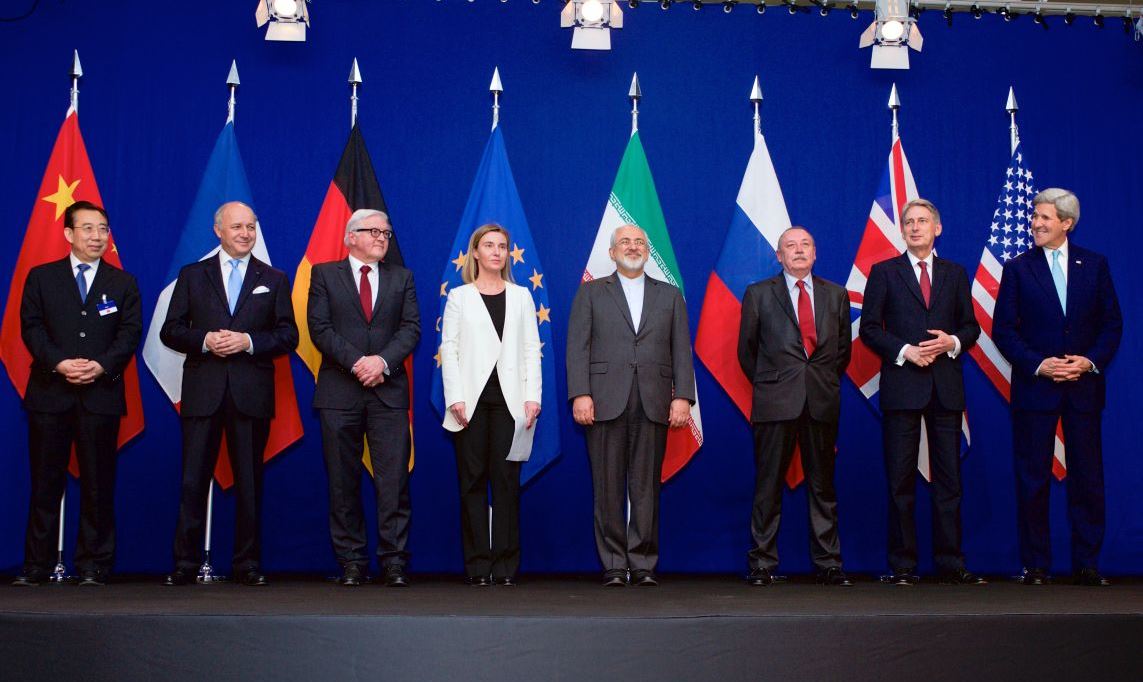The German newspaper Welt am Sonntag reported on Sunday that diplomats from the European Union, Russia and China will be meeting in Vienna this week to discuss the next steps to salvage the 2015 Iran nuclear deal. The report mentioned six things.
One, the senior EU diplomat Helga Schmid (a key negotiator of the 2015 pact) will lead the meeting; two, the US will not attend; three, Iran may or may not participate; four, the meeting will discuss a new agreement “similar” to the 2015 deal, “while also limiting Tehran’s ballistic missile program and its regional role”; five, the new agreement may provide financial aid to Tehran; and, six, diplomats will also discuss EU measures vis-à-vis US sanctions, although these would have “at best only very limited positive effects on Iran’s economy.”
The meeting follows a series of foreign-minister level consultations amongst the E3 (France, Germany and Britain), between EU and Iran, and between Iran and Russia and China. The media report appeared after the meeting Friday between Russian President Vladimir Putin and German Chancellor Angela Merkel at Sochi and before the forthcoming visit on Thursday by French President Emmanuel Macron to Russia.
Meanwhile, the European Commissioner for Energy and Climate Miguel Arias Canete visited Tehran in the weekend and met with Iranian officials, including Foreign Minister Mohammad Javad Zarif. Quite obviously, the Welt report created a false impression that the 2015 deal is dead and the Plan B to pacify US president Donald Trump is unfolding. Unsurprisingly, Iranian Foreign Ministry lashed out that the Welt report is “masterminded by think-tanks of the Zionist media and other anarchists with the aim to create negative atmosphere and to deviate dialogue between Iran and other sides.”
Separately, Iranian Deputy Foreign Minister Abbas Araqchi also clarified, “On Friday (in Vienna), the joint commission … will be held at Iran’s request, and without the United States, to discuss the consequences of America’s withdrawal, and how the remaining countries can continue their commitment to the deal.”
On Friday, in a forceful statement, EU foreign and security policy chief Federica Mogherini also asserted that the EU is “acting in unity and swiftly” to reconfirm “our commitment to the continued full and effective implementation of the Agreement and our determination to work with the international community to preserve it, so long as Iran continues to respect its commitments.”
Significantly, Mogherini described the meeting in Vienna as a new “EU/E3 + 2 and Iran format at the level of Deputy Foreign Ministers/Political Directors” to seek “practical solutions in order to maintain and deepen economic relations with Iran.” Following the meeting, the EU’s 28 foreign ministers will revert to the issue on May 28.
The Welt report reflects the uneasiness in Washington that Trump’s decision to tear up the 2015 pact has prompted EU to push back at the US. The EU has shown keenness to persuade Tehran to adhere to the 2015 deal. (Merkel also stressed this in Sochi.) Top Iranian officials maintain that although Tehran appreciates the EU’s constructive attitude, it is unsure whether the latter is doing enough to ensure that major European companies do not roll back their involvement in the Iranian economy.
Only Russia has underscored in practical terms the determination to press ahead with economic and business cooperation with Iran. A major even historic step has been taken for the establishment of a free trade zone between Eurasian Economic Union and Iran, which provides the latter preferential access to a 180-million market.
Moscow and Tehran extended their so-called “oil-for-goods” deal, which jettisons the use of US dollar in bilateral trade. (50 percent of revenues from oil sales will be spent on implementation of various joint projects.) On May 16, Iran’s Bank of Industry and Mine signed a finance contract with Russia’s Vnesheconom bank for financing a major railway project in Iran electrification of 450-kilometer-long Garmsar-Incheh Boroun Railroad with a credit line worth 1.2 billion euros.
Tehran’s interest lies in preserving the 2015 deal, but Washington’s determination to destroy the deal is also not in doubt. Trump hopes to position the US to hit Iran as hard as it possibly can by destroying the prospects of any European companies to remain engaged with Iran so as to get rid of the other participants in the 2015 multilateral deal and to force Tehran down on its knees to deal with Washington bilaterally.
This may be delusional, but Trump hopes to create a bilateral dynamic between the US and Iran through pressure tactic so that he can get a better, bigger deal to replace the 2015 pact. No doubt, the US was a critical component of the 2015 nuclear deal. Trump’s key problem was that it did nothing to fundamentally change the US-Iranian relationship or help the US in security.
However, what shouldn’t be overlooked is that the businessman-president in Washington also harbors the grouse that the 2015 deal helped only the European and Asian companies to do business with Iran.
In these circumstances, the survival of the 2015 agreement seems very difficult, unless what Mogherini calls the new “EU/E3 + 2 and Iran format” gains traction in real time, while alongside major European capitals also show the political will to assert their business interests in Iran’s economy, especially in the oil and gas industry, which is what Tehran is seeking.


